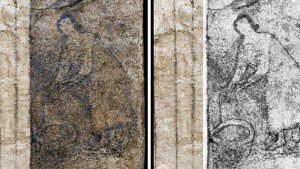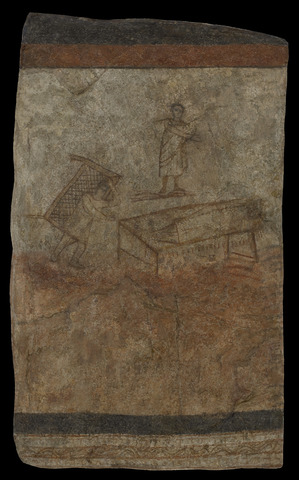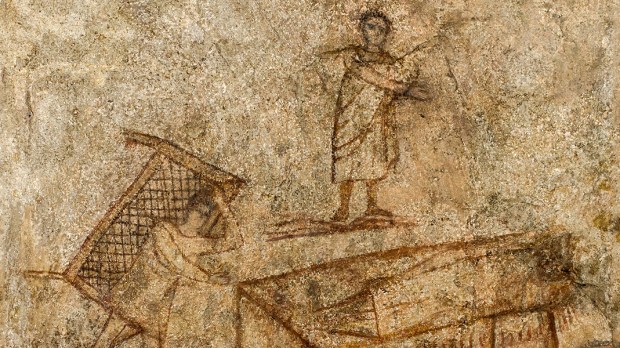Lenten Campaign 2025
This content is free of charge, as are all our articles.
Support us with a donation that is tax-deductible and enable us to continue to reach millions of readers.
The Catacomb of Callixtus in Rome, on the Appian Way, is home to the famous Crypt of the Popes and the earliest image of the Good Shepherd. It is also home to the famous 3rd-century image of Jesus raising his friend Lazarus from the dead. Even if this painting is far from being the oldest image of Jesus in the history of Christian art, it is indeed the first known representation of Lazarus.
However, famous as it is, this was not the first time one of Jesus’ miracles was reproduced in a wall. To find that first image, we must travel from Rome to Syria. More specifically, to the ancient eastern city and walled fortification of Dura-Europos. In it, the remains of the famous Dura-Europos house, the earliest identified Christian house church (a normal, domestic house converted into a small center of worship in the first half of the 3rd century), once stood.

Read more:
The 9 oldest images of Mary
The mural paintings that originally decorated the walls of the Dura-Europos house church were removed as soon as they were discovered, and taken to the Yale University Art Gallery, in New Haven, Connecticut (US).There we find the image of Jesus’ healing of the paralytic, which once stood in the baptistery area of this very early church.
This is the oldest representation of any of Jesus’ miracles in Christian art. The passage it refers to, as we find it in the Gospel of Mark, reads as follows:
Jesus stepped into a boat, crossed over and came to his own town. Some men brought to him a paralyzed man, lying on a mat. When Jesus saw their faith, he said to the man, “Take heart, son; your sins are forgiven.” At this, some of the teachers of the law said to themselves, “This fellow is blaspheming!” Knowing their thoughts, Jesus said, “Why do you entertain evil thoughts in your hearts? Which is easier: to say, ‘Your sins are forgiven,’ or to say, ‘Get up and walk’? But I want you to know that the Son of Man has authority on earth to forgive sins.” So he said to the paralyzed man, “Get up, take your mat and go home.” Then the man got up and went home. When the crowd saw this, they were filled with awe; and they praised God, who had given such authority to man.
It seems the location of this image, right in the baptistery of the Dura-Europos church, served to suggest baptism is in itself a miraculous event. Just as Jesus raised the paralytic from his pallet, baptism also “raises” the soul into a “healthy” state, through the forgiveness of sins.


